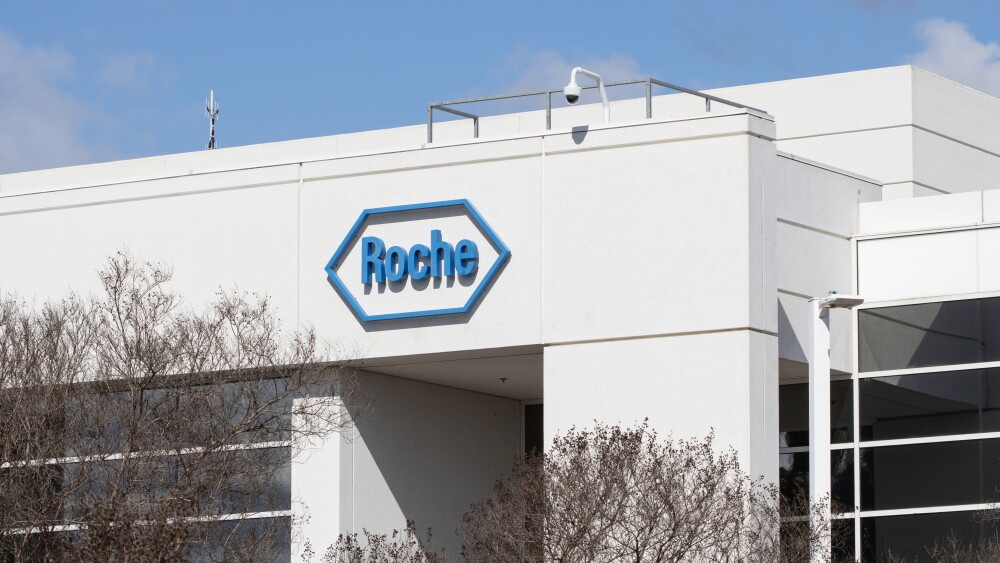Chikungunya virus[1] (CHIKV) is a mosquito-borne alphavirus causing fever, severe joint pain, rash, and muscle aches, mainly transmitted by Aedes mosquitoes. As of 2025, The chikungunya outbreak centered on Indian Ocean islands has rapidly expanded to 119 countries, including temperate regions like France 1,2 . Control focuses on vector management, surveillance, healthcare readiness, and international cooperation 3,4 . Sino Biological supports research by providing recombinant CHIKV antigens and antibodies crucial for vaccine, antiviral, and diagnostic development.
What Is Chikungunya?
Chikungunya virus is a mosquito-borne RNA virus belonging to the alphavirus genus. CHIKV infection leads to chikungunya fever. The infection is primarily transmitted to humans via the bites of infected Aedes mosquitoes, particularly Aedesaegypti and Aedesalbopictus 5,6 . Its symptoms include sudden high fever, severe joint pain, muscle aches, rash, and headache. While the disease is rarely fatal, it can be seriously debilitating, especially for the elderly, infants, and those with underlying conditions. There is currently no specific antiviral treatment for chikungunya 3,7,8 .
Geographical Spread and 2025 Outbreak Epicenters
Up to now, the chikungunyaoutbreakhas dramatically expanded to more than 110 countries, putting about 5.6 billion people at risk. Since the beginning of 2025, Reunion, Mayotte, and Mauritius have all reported major chikungunya outbreaks 5,6,8 . Notably, the virus has reached temperate regions earlier than before, with locally acquired cases reported in mainland France’s Grand Est and southeastern areas 8,9 . This surge is driven by multiple factors, including expanded Aedes mosquito habitats due to climate change, increased urbanization, and international travel facilitating virus spread, populations with low immunity after years without outbreaks, and challenges in early detection caused by inconsistent surveillance and limited diagnostic resources 2,4 .
Current Treatment and Vaccine Options for Chikungunya Virus
As of 2025, no specific antiviral treatments for the chikungunya virus exist; care is supportive, focusing on symptom relief. Vaccine progress includes two approved options in some countries: the live-attenuated IXCHIQ vaccine for adults (with restrictions for the elderly) and the single-dose virus-like particle vaccine VIMKUNYA for ages 12 and up 8 . Neither vaccine is yet widely available globally or in China. Control relies mainly on mosquito management, early detection, and public awareness.
Sino Biological’s Role in Supporting Chikungunya Virus Research
To address the ongoing CHIKV mutant outbreak, Sino Biological swiftly initiated the development ofrecombinant E1 and E2 proteins (UVE/CHIKV/2024/RE/CNR_79903)along with specific antibodies, providing crucial support to researchers working on vaccine development, antiviral therapies, and immunodiagnostic assay creation. Sino Biological offers key tools such as the recombinant CHIKV E2 glycoprotein[2] , cDNA clones, and specialized antibodies[3] for ELISA and LFA, all produced under strict quality controls to ensure reliability.
Applications of Sino Biological’s Products in Research
Sino Biological’s products are frequently cited in reputable journals. Liu T. and Gu D. used recombinant CHIKV E2 protein (Sino Biological, 40440-V08B[4] ) in an aptamer-based TRFIA assay to study the binding affinity and specificity of novel peptides to CHIKV E2 antigens (Figure 2) 10 .Tamburini B. et al. investigated viral antigen acquisition in LEC, BEC, and FRC cells in C57BL/6 mice infected with recombinant CHIKV E2 antigen (Sino Biological, 40440-V08B[5] ) conjugated to AlexaFluor-488. They found that both LECs and a subset of FRCs acquired the CHIKV E2 protein during the treatment window (Figure 3) 11 .Lim H. and Kim K. showed that CHIKV EI/II protein or N-linked glycan mutant E proteins induced lower humoral immune responses than the full-length E protein using mouse sera in a recombinant CHIKV E2 protein (Sino Biological, 40440-V08B[6] ) pre-coated ELISA (Figure 4) 12 .Wang T. et al. reported that EILV/CHIKV-vaccinated macaques exhibited stronger neutralization titers and higher CHIKV E2 binding IgG responses in ELISA coated with recombinant CHIKV E2 protein (Sino Biological, 40440-V08B[7] ) (Figure 5) 13 .
Figure 2. Detection of serially diluted (0-1000 ng/mL) recombinant CHIKV-E2 (Sino Biological, 40440-V08B[8] ), ZIKA-E (Sino Biological, 40543-V08B4[9] ), DENV-E (Sino Biological, 40471-V08B[10] ) proteins using peptide aptamers B2 and B3 10 .
Figure 3. Quantification of the frequency of LEC, BEC, and FRC in the popliteal lymph node (pLN) that are positive for the recombinant SARS-CoV-2 RBD and CHIKV-E2 antigens (Sino Biological, 40440-V08B[11] ) administered with polyI:C and αCD40 at indicated time 11 . Image source:
https://pmc.ncbi.nlm.nih.gov/articles/PMC10957963
Figure 4. Sera from individual mice were serially diluted, and anti-CHIKV-E2 protein specific total IgG levels were quantified using ELISA with recombinant CHIKV E2 protein (Sino Biological, 40440-V08B[12] ) pre-coated 12 . Image source:
https://pmc.ncbi.nlm.nih.gov/articles/PMC11511311/
Figure 5. CHIKV E2 binding IgG responses at indicate time points by ELISA, pre-coated with recombinant CHIKV E2 protein (Sino Biological, 40440-V08B[13] ) 13. Image source:
https://pmc.ncbi.nlm.nih.gov/articles/PMC11659317/
Featured CHIKV Antigens
Featured CHIKV Antibodies
References
What Is Chikungunya?
Chikungunya virus is a mosquito-borne RNA virus belonging to the alphavirus genus. CHIKV infection leads to chikungunya fever. The infection is primarily transmitted to humans via the bites of infected Aedes mosquitoes, particularly Aedesaegypti and Aedesalbopictus 5,6 . Its symptoms include sudden high fever, severe joint pain, muscle aches, rash, and headache. While the disease is rarely fatal, it can be seriously debilitating, especially for the elderly, infants, and those with underlying conditions. There is currently no specific antiviral treatment for chikungunya 3,7,8 .
| Figure 1. Transmission cycle of the Chikungunya virus between humans and mosquitoes. The virus is primarily spread by Aedes (Stegomyia) species mosquitoes, mainly Aedes aegypti and Aedes albopictus. Infected mosquitoes transmit the virus to humans through bites, and infected humans can subsequently infect new mosquitoes, sustaining the transmission cycle 8 . Image source: https://www.cdc.gov/chikungunya/php/transmission/index.html |
Geographical Spread and 2025 Outbreak Epicenters
Up to now, the chikungunyaoutbreakhas dramatically expanded to more than 110 countries, putting about 5.6 billion people at risk. Since the beginning of 2025, Reunion, Mayotte, and Mauritius have all reported major chikungunya outbreaks 5,6,8 . Notably, the virus has reached temperate regions earlier than before, with locally acquired cases reported in mainland France’s Grand Est and southeastern areas 8,9 . This surge is driven by multiple factors, including expanded Aedes mosquito habitats due to climate change, increased urbanization, and international travel facilitating virus spread, populations with low immunity after years without outbreaks, and challenges in early detection caused by inconsistent surveillance and limited diagnostic resources 2,4 .
Current Treatment and Vaccine Options for Chikungunya Virus
As of 2025, no specific antiviral treatments for the chikungunya virus exist; care is supportive, focusing on symptom relief. Vaccine progress includes two approved options in some countries: the live-attenuated IXCHIQ vaccine for adults (with restrictions for the elderly) and the single-dose virus-like particle vaccine VIMKUNYA for ages 12 and up 8 . Neither vaccine is yet widely available globally or in China. Control relies mainly on mosquito management, early detection, and public awareness.
Sino Biological’s Role in Supporting Chikungunya Virus Research
To address the ongoing CHIKV mutant outbreak, Sino Biological swiftly initiated the development ofrecombinant E1 and E2 proteins (UVE/CHIKV/2024/RE/CNR_79903)along with specific antibodies, providing crucial support to researchers working on vaccine development, antiviral therapies, and immunodiagnostic assay creation. Sino Biological offers key tools such as the recombinant CHIKV E2 glycoprotein[2] , cDNA clones, and specialized antibodies[3] for ELISA and LFA, all produced under strict quality controls to ensure reliability.
Applications of Sino Biological’s Products in Research
Sino Biological’s products are frequently cited in reputable journals. Liu T. and Gu D. used recombinant CHIKV E2 protein (Sino Biological, 40440-V08B[4] ) in an aptamer-based TRFIA assay to study the binding affinity and specificity of novel peptides to CHIKV E2 antigens (Figure 2) 10 .Tamburini B. et al. investigated viral antigen acquisition in LEC, BEC, and FRC cells in C57BL/6 mice infected with recombinant CHIKV E2 antigen (Sino Biological, 40440-V08B[5] ) conjugated to AlexaFluor-488. They found that both LECs and a subset of FRCs acquired the CHIKV E2 protein during the treatment window (Figure 3) 11 .Lim H. and Kim K. showed that CHIKV EI/II protein or N-linked glycan mutant E proteins induced lower humoral immune responses than the full-length E protein using mouse sera in a recombinant CHIKV E2 protein (Sino Biological, 40440-V08B[6] ) pre-coated ELISA (Figure 4) 12 .Wang T. et al. reported that EILV/CHIKV-vaccinated macaques exhibited stronger neutralization titers and higher CHIKV E2 binding IgG responses in ELISA coated with recombinant CHIKV E2 protein (Sino Biological, 40440-V08B[7] ) (Figure 5) 13 .
Figure 2. Detection of serially diluted (0-1000 ng/mL) recombinant CHIKV-E2 (Sino Biological, 40440-V08B[8] ), ZIKA-E (Sino Biological, 40543-V08B4[9] ), DENV-E (Sino Biological, 40471-V08B[10] ) proteins using peptide aptamers B2 and B3 10 .
Figure 3. Quantification of the frequency of LEC, BEC, and FRC in the popliteal lymph node (pLN) that are positive for the recombinant SARS-CoV-2 RBD and CHIKV-E2 antigens (Sino Biological, 40440-V08B[11] ) administered with polyI:C and αCD40 at indicated time 11 . Image source:
https://pmc.ncbi.nlm.nih.gov/articles/PMC10957963
Figure 4. Sera from individual mice were serially diluted, and anti-CHIKV-E2 protein specific total IgG levels were quantified using ELISA with recombinant CHIKV E2 protein (Sino Biological, 40440-V08B[12] ) pre-coated 12 . Image source:
https://pmc.ncbi.nlm.nih.gov/articles/PMC11511311/
Figure 5. CHIKV E2 binding IgG responses at indicate time points by ELISA, pre-coated with recombinant CHIKV E2 protein (Sino Biological, 40440-V08B[13] ) 13. Image source:
https://pmc.ncbi.nlm.nih.gov/articles/PMC11659317/
Featured CHIKV Antigens
| Cat# | Antigen | Expression Host | Purity | Tag | Strain |
| 41094-V49H | CHIKV-E2 | HEK293 Cells | ≥ 90% | His & AVI | UVE/CHIKV/2024/RE/CNR_79903 |
| 41094-V49H-B | CHIKV-E2 | HEK293 Cells | ≥ 90% | His & AVI | UVE/CHIKV/2024/RE/CNR_79903 |
| 40440-V08B | CHIKV-E2 | Baculovirus-Insect Cells | > 90% | His | strain SL-CK1 |
| 40440-VCCB | CHIKV-E2 | Baculovirus-Insect Cells | ≥ 95% | No tag | strain SL-CK1 |
Featured CHIKV Antibodies
| Cat# | Antigen | Application | Clonality | Ig Type |
| 40440-MM02 | CHIKV-E2 | ELISA | Mouse MAb | Mouse IgG2b |
| 40440-MM20 | CHIKV-E2 | ELISA | Mouse MAb | Mouse IgG2b |
| 40440-T46 | CHIKV-E2 | WB | Rabbit PAb | Rabbit IgG |
| 40440-MM15 | CHIKV-E2 | ELISA | Mouse MAb | Mouse IgG1 |
| 40440-MM25 | CHIKV-E2 | ELISA, ELISA (Cap) | Mouse MAb | Mouse IgG1 |
| 40440-MM26 | CHIKV-E2 | WB, ELISA, ELISA (Det) | Mouse MAb | Mouse IgG2b |
| 40440-MM32 | CHIKV-E2 | WB, ELISA | Mouse MAb | Mouse IgG2a |
| 40440-MM33 | CHIKV-E2 | ELISA | Mouse MAb | Mouse IgG1 |
References
- Zumla, A., Ntoumi, F., Ippolito, G. & Consortium, P. Chikungunya virus disease returns to Europe: a turning point for the global arboviral landscape. The Lancet0, (2025).
- Roiz, D., Boussès, P., Simard, F., Paupy, C. & Fontenille, D. Autochthonous Chikungunya transmission and extreme climate events in Southern France. PLoS Negl Trop Dis9, (2015).
- Control, E. C. for D. P. and. Chikungunya virus disease worldwide overview. Preprint at (2025).
- de Souza, W. M., Lecuit, M. & Weaver, S. C. Chikungunya virus and other emerging arthritogenic alphaviruses. Nat Rev Microbiol (2025) doi:10.1038/S41579-025-01177-8.
- World Health Organization raises concern about spread of mosquito-borne Chikungunya virus | Reuters. https://www.reuters.com/business/healthcare-pharmaceuticals/world-health-organization-raises-concern-about-spread-mosquito-borne-chikungunya-2025-07-22/.
- Chikungunya epidemiology update - June 2025. https://www.who.int/publications/m/item/chikungunya-epidemiology-update-june-2025.
- What is the chikungunya virus, how are countries such as China battling it? | Health News | Al Jazeera. https://www.aljazeera.com/news/2025/8/6/what-is-the-chikungunya-virus-how-are-countries-such-as-china-battling-it.
- Areas at Risk for Chikungunya | Chikungunya Virus | CDC. https://www.cdc.gov/chikungunya/data-maps/index.html.
- Frumence, E. et al. Genomic insights into the re-emergence of chikungunya virus on Réunion Island, France, 2024 to 2025. Eurosurveillance30, (2025).
- Liu, T. et al. Peptide aptamer-based time-resolved fluoroimmunoassay for CHIKV diagnosis. Virol J20, (2023).
- Doan, T. A. et al. Immunization-induced antigen archiving enhances local memory CD8+ T cell responses following an unrelated viral infection. NPJ Vaccines9, (2024).
- Kim, K. et al. Immunogenicity Analysis of Chikungunya Virus DNA Vaccine Based on Mutated Putative N-Linked Glycosylation Sites of the Envelope Protein. Vaccines (Basel)12, (2024).
- Adam, A. et al. A safe insect-based chikungunya fever vaccine affords rapid and durable protection in cynomolgus macaques. NPJ Vaccines9, (2024).









